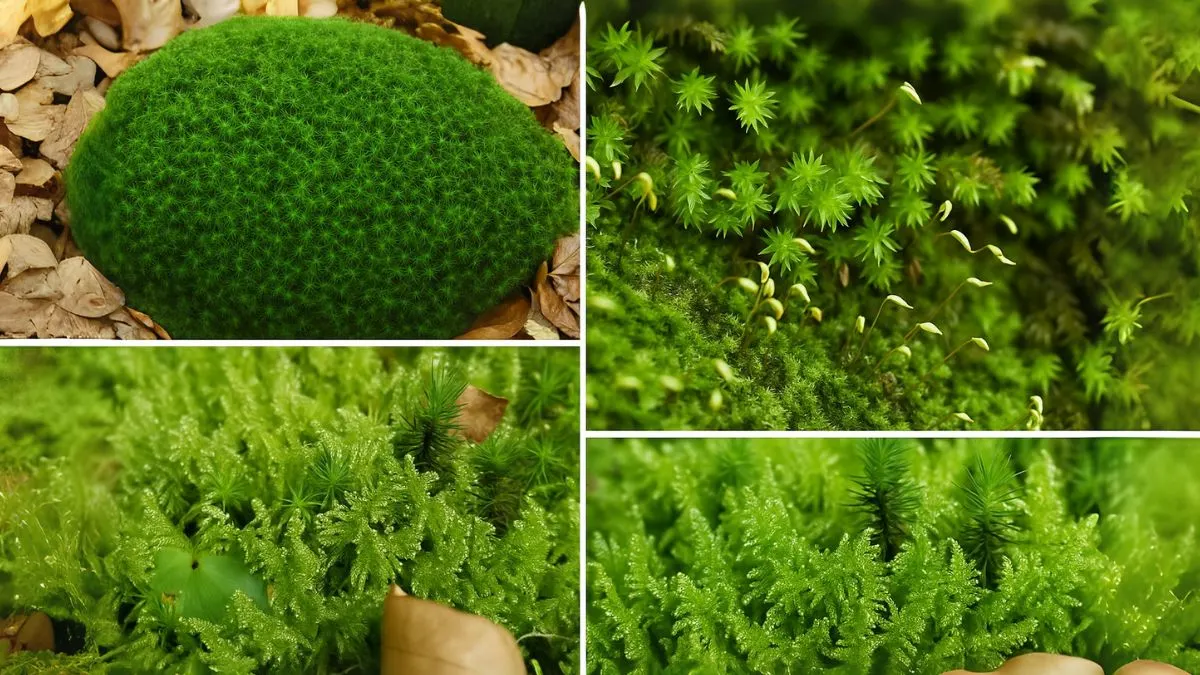When you imagine a lush, fairy-tale garden, chances are mosses plays a role in that vision. These small, velvety plants not only soften the look of rocks, soil, and trees but also improve soil health, retain moisture, and reduce erosion. From Sheet Moss to Spanish moss, each type brings a unique charm and benefit. In this guide, we’ll explore 9 different varieties of moss—their uses, benefits, and care tips—so you can choose the best ones to transform your outdoor or indoor green spaces.
Why Choose Moss for Your Garden?

Unlike grass or flowering plants, mosses are low-maintenance and thrive in shaded, damp environments where other plants struggle. They don’t need fertiliser, mowing, or much care, making them a sustainable, eco-friendly choice. Mosses also provide:
- Natural ground cover for shady areas
- Protection against soil erosion
- Increased moisture retention in soil
- An evergreen, calming look year-round
1. Sheet Moss
Sheet Moss forms lush, flat carpets, making it one of the most popular choices for gardens. It works beautifully between stepping stones or as a living mulch under trees. Sheet Moss is widely used in landscaping because it provides a natural green carpet effect and thrives in shaded, moist conditions.
Best use: Pathways, terrariums, and shady ground cover.
2. Carpet Moss
As the name suggests, Carpet Moss spreads to create a smooth, uniform covering. It’s ideal for creating a soft, velvety layer across rocks, soil, and even decorative containers. Like Sheet Moss, it enhances soil health and is perfect for erosion-prone areas.
Best use: Lawn replacement in shaded gardens.
Also Read: China Doll Plant: A Stylish Evergreen for Modern Homes
3. Mood Moss
Mood Moss is popular for its fluffy, cushion-like appearance. It adds texture to landscapes, terrariums, or bonsai displays. Gardeners love how it thrives in both indoor and outdoor settings while giving a “forest floor” vibe.
Best use: Adding natural texture to rock gardens and terrariums.
4. Pincushion Moss
Known for its rounded, dome-shaped clumps, Pincushion Moss looks like little green pillows sprinkled across the soil. It grows slowly but rewards patience with a tidy and ornamental appearance.
Best use: Decorative moss gardens and minimalist Japanese-style landscapes.
5. Fern Moss
Fern Moss resembles tiny ferns with its feathery texture. It grows well in shady, damp environments, making it a great option for woodland gardens. Its airy appearance softens stone edges and tree roots.
Best use: Woodland-inspired gardens and shaded garden borders.
6. Sphagnum Moss
Famous worldwide, Sphagnum Moss is highly absorbent and often used in potting mixes and hanging baskets. It enhances soil health and microbial activity, making it a natural moisture booster for orchids and houseplants.
Best use: Hanging baskets, potting mixes, and soil conditioning.

7. Haircap Moss
With upright stems that resemble tiny pine trees, Haircap Moss is striking and resilient. It’s one of the tallest moss species and grows in clumps, often in woodlands or acidic soils.
Best use: Naturalistic landscapes and shaded garden areas.
Also Read: 5 Stunning Succulents That Can Survive Snow & Frost
8. Hedwigia Moss
This versatile moss grows on rocks, soil, and even tree bark. Hedwigia Moss is hardy and provides long-lasting greenery in various climates. It’s especially loved for adding depth and contrast in rock gardens.
Best use: Rock gardens and stone pathways.
9. Plume Moss
Plume Moss has a delicate, feathery appearance and spreads quickly, creating soft ground cover. It’s particularly effective in shady areas that need a lush, natural makeover.
Best use: Dense ground cover in shaded corners of gardens.
Bonus Moss Varieties to Explore
- American Tree Moss (Climacium Americanum): Known for its tree-like growth structure.
- Spanish moss: A dramatic, hanging moss often used in southern-style gardens.
- Chartreuse reindeer moss: Adds a pop of color to rock gardens and arrangements.
Benefits of Adding Moss to Your Garden
Moss Variety |
Key Benefit |
Best Use |
Sheet Moss |
Soft ground cover |
Shady pathways |
Sphagnum Moss |
Soil amendment |
Hanging baskets |
Haircap Moss |
Tall, tree-like look |
Natural woodlands |
Plume Moss |
Quick spreader |
Dense shaded areas |
Mosses don’t just add beauty—they also contribute to biodiversity, retain soil moisture, and reduce weeds naturally.
Also Read: How to Grow and Care for the Syngonium Pink Plant at Home
Personal Tip 🌿
When I first tried growing mosses, I struggled with keeping it alive because I placed it in too much sun. Later, I learned that moss thrives in partial to full shade with consistent moisture. Once I corrected this, my moss ground cover flourished without fertiliser or much care—a perfect, low-maintenance win for my garden!
From Sheet Moss and Carpet Moss to Plume Moss and Spanish moss, these versatile plants are more than just decoration. They bring structure, improve soil, and create a serene, natural aesthetic in any garden. If you’re looking for eco-friendly ground cover that requires minimal care, adding moss is the perfect choice.
👉 Ready to create your own moss garden? Start small with Sheet Moss or Sphagnum Moss, and you’ll quickly see how these green wonders transform your space into a living masterpiece.






